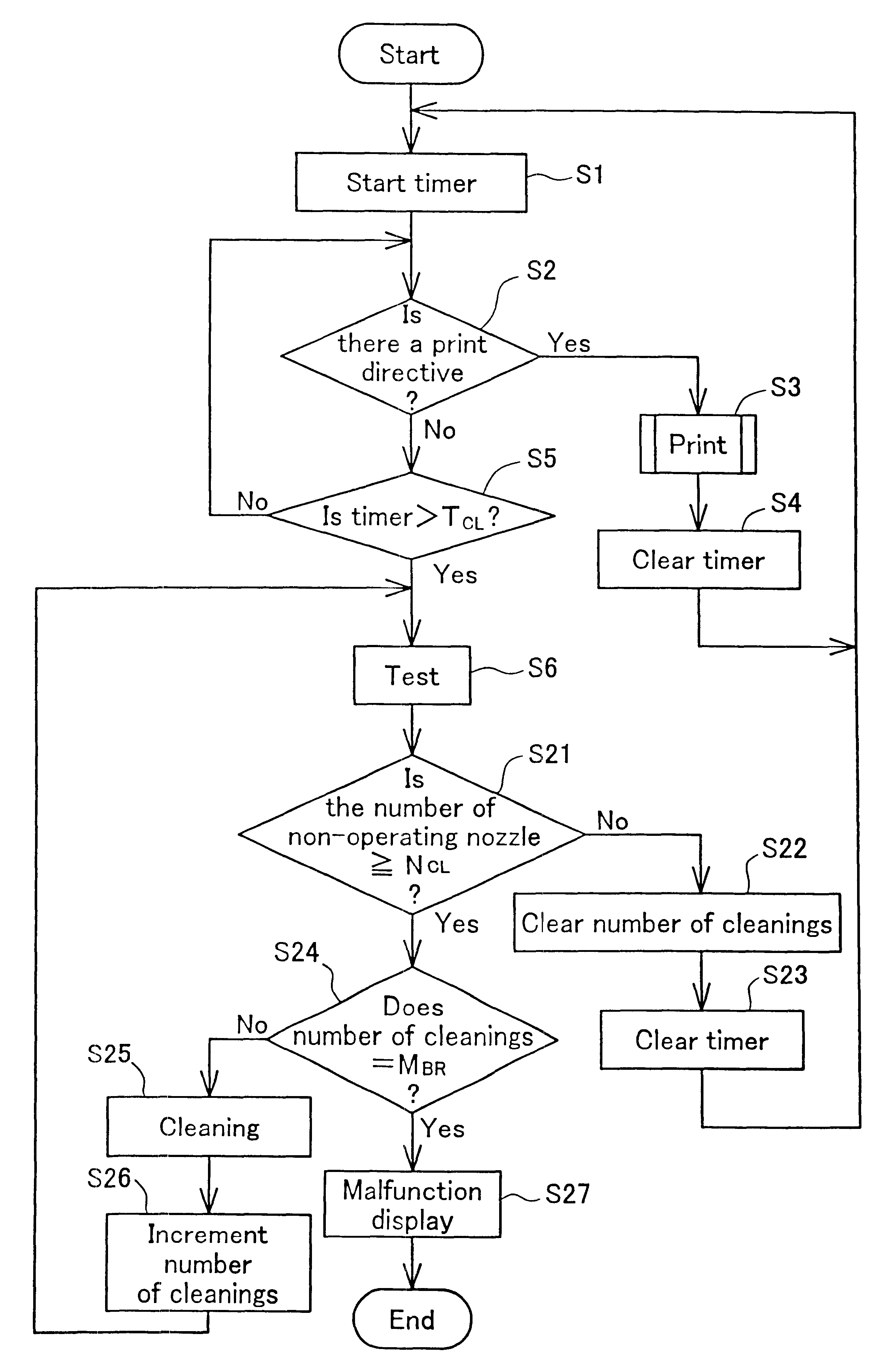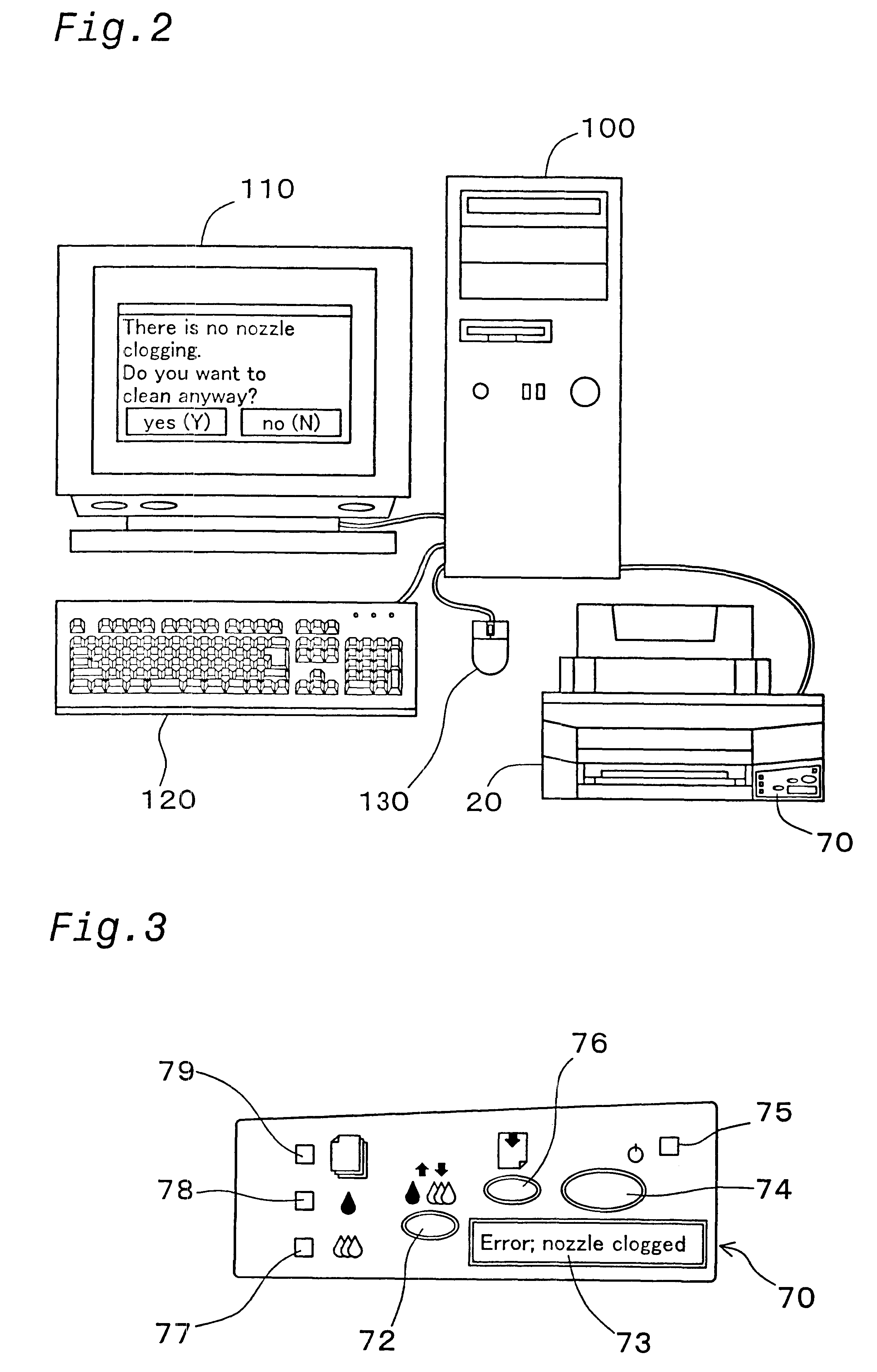Nozzle testing before and after nozzle cleaning
a technology of nozzles and cleaning, applied in printing, other printing apparatus, etc., can solve the problems of inability to eject ink droplets, nozzles become clogged, and the viscosity of ink can increase to the point where ink droplets cannot be ejected from the nozzles
- Summary
- Abstract
- Description
- Claims
- Application Information
AI Technical Summary
Benefits of technology
Problems solved by technology
Method used
Image
Examples
fifth example
(3) Effect of the Fifth Example
In the fifth example, it is possible to carry out a cleaning operation for every nozzle set, and the nozzle set to be cleaned in step S101 is selected. No cleaning is performed for nozzle sets in which there are no non-operating nozzles. Accordingly, no ink is wasted by being drawn from the nozzles by suction.
Also, in the fifth example the cleaning of the nozzles is done in a sequence that includes a plurality of cleaning operations. A nozzle test is conducted in between each cleaning operation, and the cleaning is concluded at the point when there are no more non-operating nozzles. Thus, no time is spent or ink consumed performing unnecessary cleaning.
Furthermore, since cleaning operations with a higher likelihood of clearing the nozzle clogging are performed later, there is a greater probability that the clogging will be cleared as the sequence proceeds. Also, since the cleaning operations that consume a larger quantity of ink, such as S207, are posi...
sixth example
(2) Effect of the Sixth Example
A nozzle clogged with black ink is more difficult to clear than a nozzle clogged with an ink of another color. Thus, it is less likely that the clogging will be cleared with just ink suction (see FIG. 19) as in step S201 of the first cleaning sequence. In the sixth example, the second cleaning sequence is carried out when there is a black nozzle among the non-operating nozzles. Specifically, the cleaning operations of step S203 and beyond (see FIG. 20) are carried out without performing the cleaning operation of step S201. Thus, no ink is consumed performing cleaning with little likelihood of clearing the clog. The nozzle group K.sub.D corresponds to the "second nozzle group" referred to in the Claims, while the other nozzle group corresponds to the "first nozzle group" referred to in the Claims.
In the sixth example, if the non-operating nozzles include a nozzle from the second nozzle group, then the second cleaning sequence is executed, the first clea...
PUM
 Login to View More
Login to View More Abstract
Description
Claims
Application Information
 Login to View More
Login to View More - R&D
- Intellectual Property
- Life Sciences
- Materials
- Tech Scout
- Unparalleled Data Quality
- Higher Quality Content
- 60% Fewer Hallucinations
Browse by: Latest US Patents, China's latest patents, Technical Efficacy Thesaurus, Application Domain, Technology Topic, Popular Technical Reports.
© 2025 PatSnap. All rights reserved.Legal|Privacy policy|Modern Slavery Act Transparency Statement|Sitemap|About US| Contact US: help@patsnap.com



